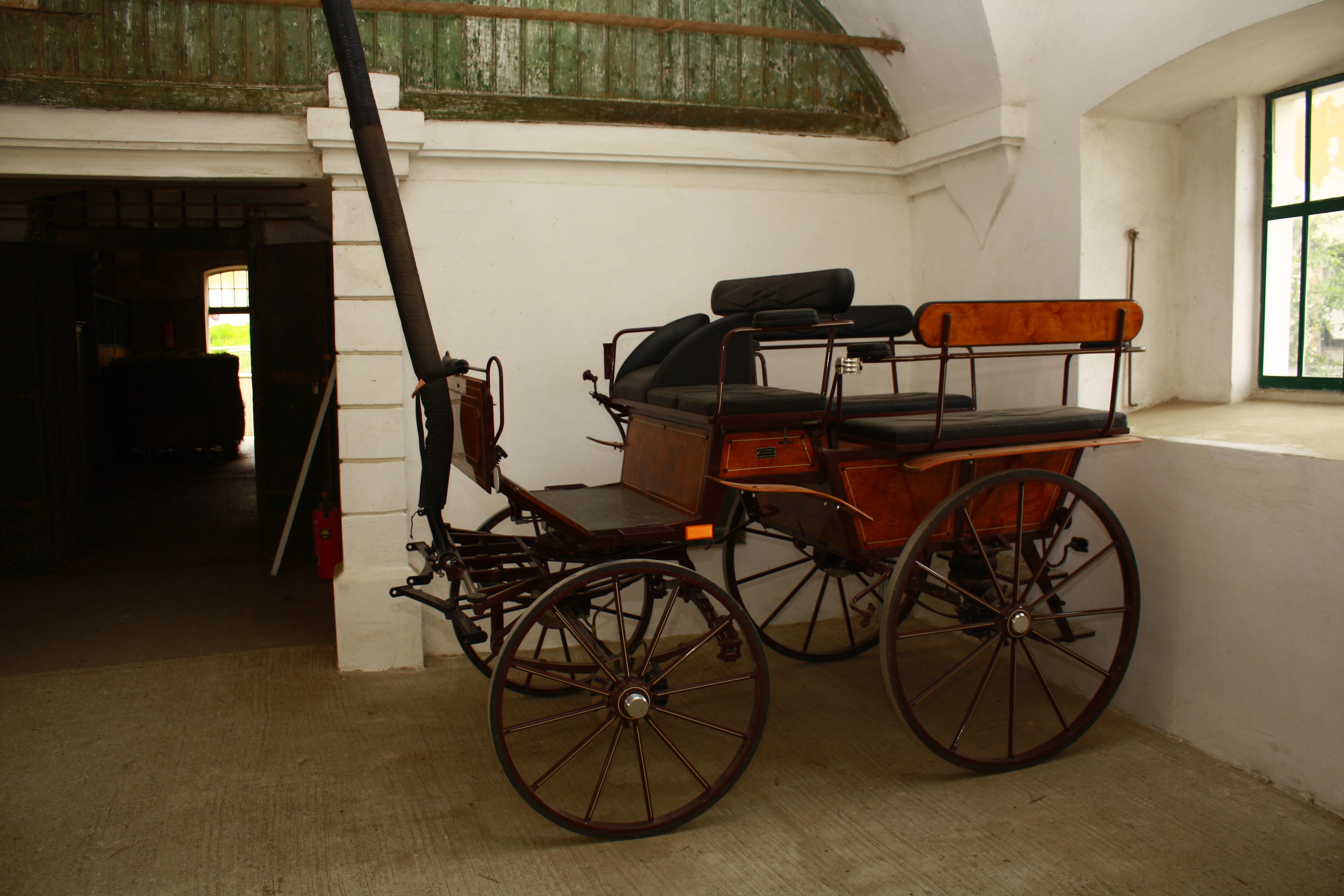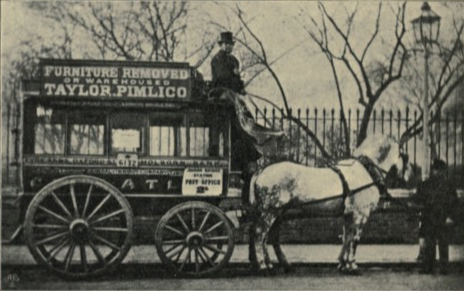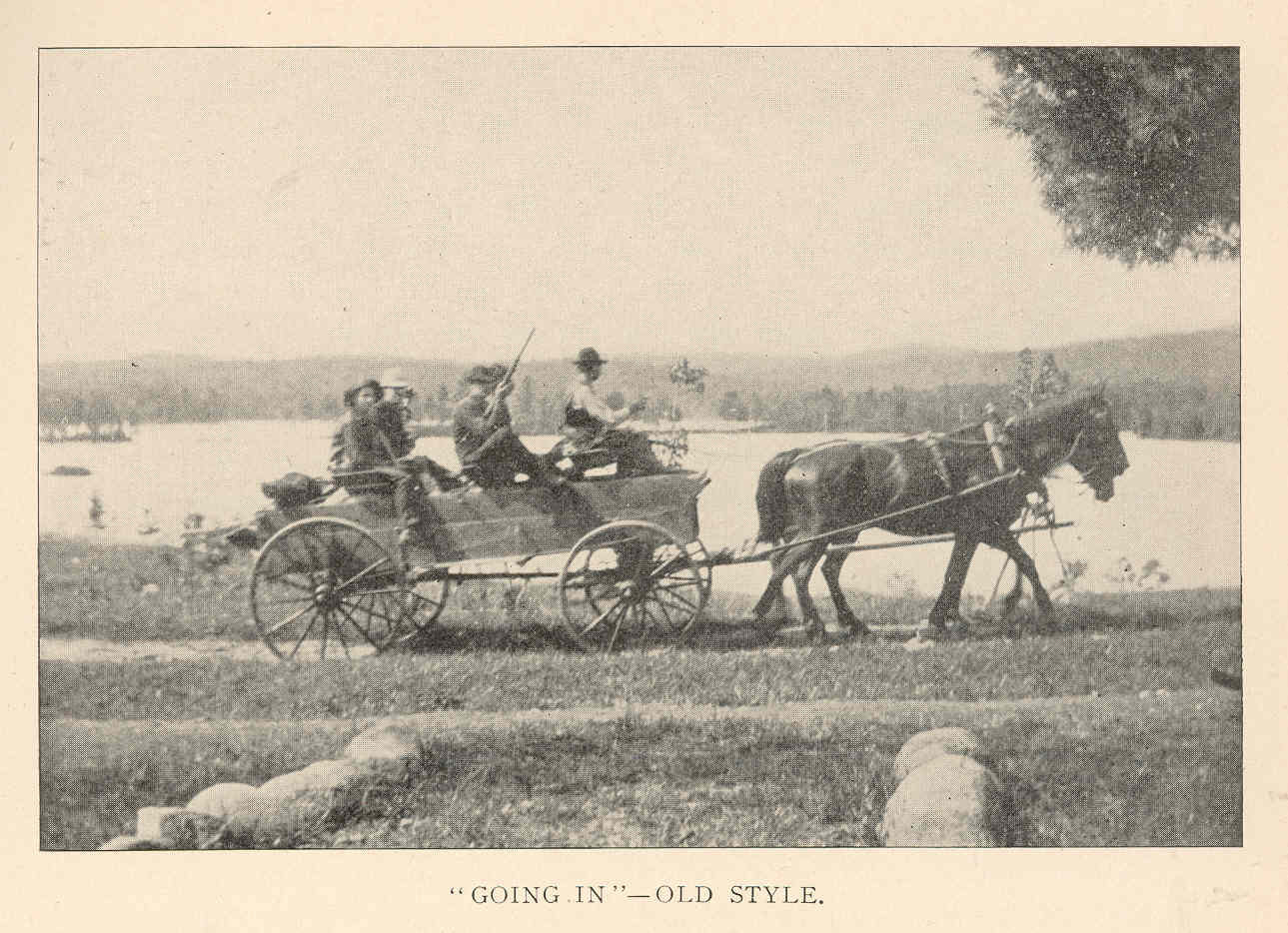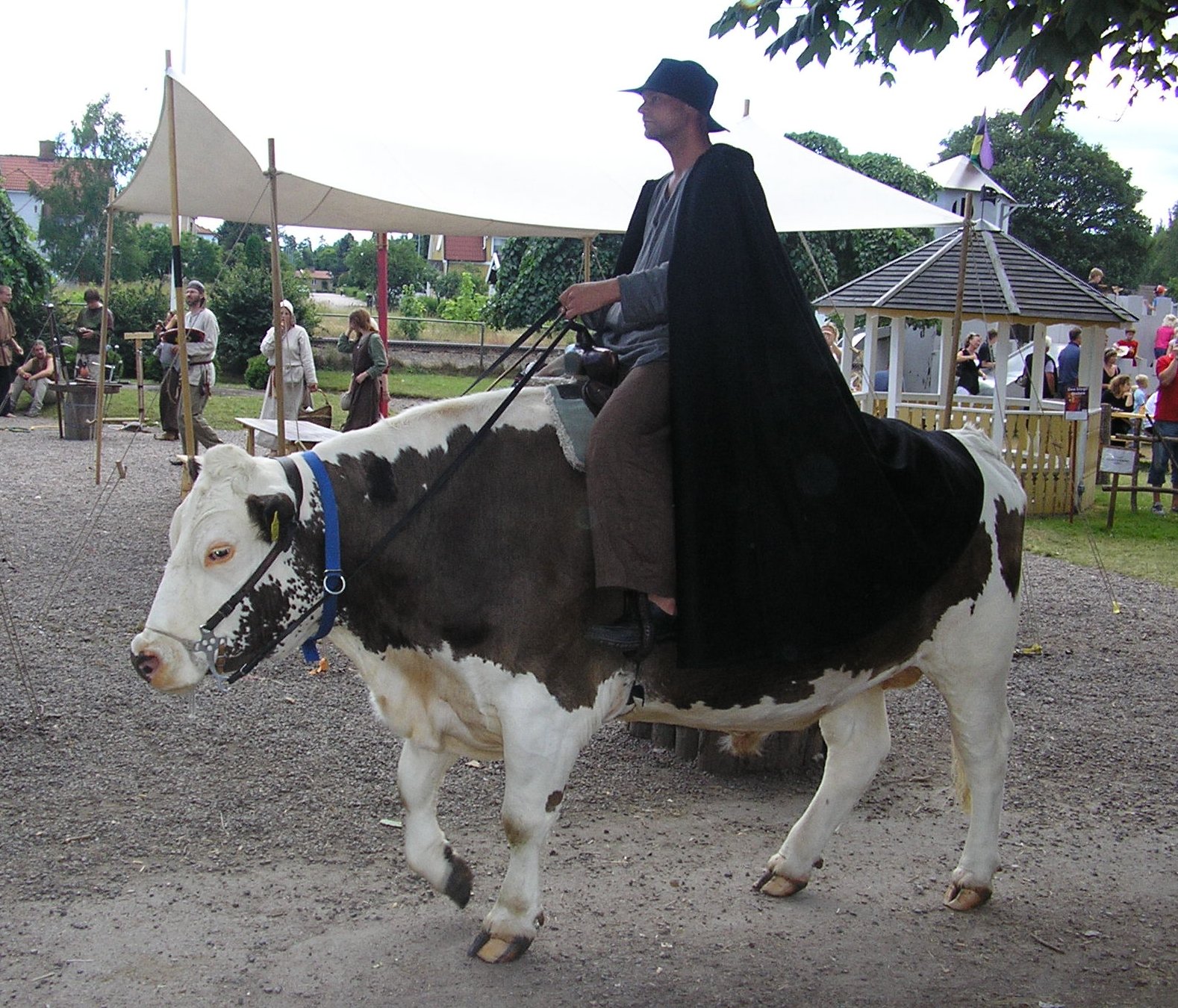|
Wagonette
A wagonette (''little wagon'') is a small horse-drawn vehicle with springs, which has two benches along the right and left side of the platform, people facing each other. The driver sits on a separate, front-facing bench. A wagonette may be open or have a tilt. A large horse-drawn enclosed vehicle with spring-suspension, a similar arrangement of the seats and obligatory roof is called a horsebus. The 1914 book ''Motor Body-building in All Its Branches'' by Christopher William Terry, defined a shooting-brake as a wagonette provided with game and gun racks and accommodation for ammunition. See also * Carriage * Horsebus A horse-bus or horse-drawn omnibus was a large, enclosed, and sprung horse-drawn vehicle used for passenger transport before the introduction of motor vehicles. It was mainly used in the late 19th century in both the United States and Europe ... References Animal-powered vehicles Horse transportation {{vehicle-stub ... [...More Info...] [...Related Items...] OR: [Wikipedia] [Google] [Baidu] |
Horse-drawn Vehicle
A horse-drawn vehicle is a mechanized piece of equipment pulled by one horse or by a team of horses. These vehicles typically had two or four wheels and were used to carry passengers and/or a load. They were once common worldwide, but they have mostly been replaced by automobiles and other forms of self-propelled transport. General Horses were domesticated circa 3500 BCE. Prior to that oxen were used. Historically a wide variety of arrangements of horses and vehicles have been used, from chariot racing, which involved a small vehicle and four horses abreast, to horsecars or trollies, which used two horses to pull a car that was used in cities before electric trams were developed. A two-wheeled horse-drawn vehicle is a cart (see various types below, both for carrying people and for goods). Four-wheeled vehicles have many names – one for heavy loads is most commonly called a wagon. Very light carts and wagons can also be pulled by donkeys (much smaller than horses), pony, po ... [...More Info...] [...Related Items...] OR: [Wikipedia] [Google] [Baidu] |
Carriage
A carriage is a private four-wheeled vehicle for people and is most commonly horse-drawn. Second-hand private carriages were common public transport, the equivalent of modern cars used as taxis. Carriage suspensions are by leather strapping and, on those made in recent centuries, steel springs. Two-wheeled carriages are informal and usually owner-driven. Coaches are a special category within carriages. They are carriages with four corner posts and a fixed roof. Two-wheeled war chariots and transport vehicles such as four-wheeled wagons and two-wheeled carts were forerunners of carriages. In the twenty-first century, horse-drawn carriages are occasionally used for public parades by royalty and for traditional formal ceremonies. Simplified modern versions are made for tourist transport in warm countries and for those cities where tourists expect open horse-drawn carriages to be provided. Simple metal sporting versions are still made for the sport known as competitive driving. ... [...More Info...] [...Related Items...] OR: [Wikipedia] [Google] [Baidu] |
SchlossHof 2083
Schloss Hof is a palace located in Marchfeld, Austria near the border of Slovakia. It once belonged to Prince Eugene of Savoy who purchased it late in his life in 1726. He had it enlarged in the Baroque style by the architect Johann Lukas von Hildebrandt in 1729, and used it as an elaborate hunting lodge. He left it to a niece in his will, and it was later purchased by Empress Maria Theresa of Austria and became part of the imperial estates. The castle was built in the 1620s to the east of what was then the medieval fortress of Hof. After Prince Eugene of Savoy acquired the complex in 1725, he expanded it into a representative country residence. In 1755 the castle came into the possession of Austria's sovereign Maria Theresa. From 1773 to 1775, Franz Anton Hillebrandt carried out a conversion and expansion to give it the appearance it has today. The Baroque garden The Baroque garden was a style of garden based upon symmetry and the principle of imposing order on nature. The sty ... [...More Info...] [...Related Items...] OR: [Wikipedia] [Google] [Baidu] |
Leaf Spring
A leaf spring is a simple form of spring commonly used for the suspension in wheeled vehicles. Originally called a ''laminated'' or ''carriage spring'', and sometimes referred to as a semi-elliptical spring, elliptical spring, or cart spring, it is one of the oldest forms of vehicle suspension. A leaf spring is one or more narrow, arc-shaped, thin plates which are attached to the axle and chassis in a way that allows the leaf spring to flex vertically in response to irregularities in the road surface. Lateral leaf springs are the most commonly used arrangement, running the length of the vehicle and mounted perpendicular to the wheel axle, but numerous examples of transverse leaf springs exist as well. Leaf springs can serve multiple suspension functions: location, springing, and to some extent damping as well, through interleaf friction. However, this friction is not well controlled, resulting in stiction and irregular suspension motions. For this reason, some manufacturers have ... [...More Info...] [...Related Items...] OR: [Wikipedia] [Google] [Baidu] |
Roof
A roof ( : roofs or rooves) is the top covering of a building, including all materials and constructions necessary to support it on the walls of the building or on uprights, providing protection against rain, snow, sunlight, extremes of temperature, and wind. A roof is part of the building envelope. The characteristics of a roof are dependent upon the purpose of the building that it covers, the available roofing materials and the local traditions of construction and wider concepts of architectural design and practice, and may also be governed by local or national legislation. In most countries, a roof protects primarily against rain. A verandah may be roofed with material that protects against sunlight but admits the other elements. The roof of a garden conservatory protects plants from cold, wind, and rain, but admits light. A roof may also provide additional living space, for example, a roof garden. Etymology Old English 'roof, ceiling, top, summit; heaven, sky', also f ... [...More Info...] [...Related Items...] OR: [Wikipedia] [Google] [Baidu] |
Horsebus
A horse-bus or horse-drawn omnibus was a large, enclosed, and sprung horse-drawn vehicle used for passenger transport before the introduction of motor vehicles. It was mainly used in the late 19th century in both the United States and Europe, and was one of the most common means of transportation in cities. In a typical arrangement, two wooden benches along the sides of the passenger cabin held several sitting passengers facing each other. The driver sat on a separate, front-facing bench, typically in an elevated position outside the passengers' enclosed cabin. In the main age of horse buses, many of them were double-decker buses. On the upper deck, which was uncovered, the longitudinal benches were arranged back to back. Similar, if smaller, vehicles were often maintained at country houses (and by some hotels and railway companies) to convey servants and luggage to and from the railway station. Especially popular around 1870–1900, these vehicles were known as a 'private omni ... [...More Info...] [...Related Items...] OR: [Wikipedia] [Google] [Baidu] |
Shooting-brake
Shooting brake (sometimes mis-identified as "shooting break") is a car body style which originated in the 1890s as a horse-drawn wagon used to transport shooting parties with their equipment and game. The first automotive shooting brakes were manufactured in the early 1900s in the United Kingdom. The vehicle style became popular in England during the 1920s and 1930s. They were produced by vehicle manufacturers or as conversions by coachbuilders. The term was used in Britain interchangeably with estate car from the 1930s but has not been in general use for many years and has been more or less superseded by the latter term. The term has evolved to describe cars combining elements of both station wagon (estate) and coupé body styles, with or without reference to the historical usage for shooting parties. A shooting brake is a subcategory of a station wagon, based on a coupé rather than a sedan. Being based on four-door coupés is why manufacturers call models such as the Merced ... [...More Info...] [...Related Items...] OR: [Wikipedia] [Google] [Baidu] |
Horsebus
A horse-bus or horse-drawn omnibus was a large, enclosed, and sprung horse-drawn vehicle used for passenger transport before the introduction of motor vehicles. It was mainly used in the late 19th century in both the United States and Europe, and was one of the most common means of transportation in cities. In a typical arrangement, two wooden benches along the sides of the passenger cabin held several sitting passengers facing each other. The driver sat on a separate, front-facing bench, typically in an elevated position outside the passengers' enclosed cabin. In the main age of horse buses, many of them were double-decker buses. On the upper deck, which was uncovered, the longitudinal benches were arranged back to back. Similar, if smaller, vehicles were often maintained at country houses (and by some hotels and railway companies) to convey servants and luggage to and from the railway station. Especially popular around 1870–1900, these vehicles were known as a 'private omni ... [...More Info...] [...Related Items...] OR: [Wikipedia] [Google] [Baidu] |
Animal-powered Vehicles
The following outline is provided as an overview of and topical guide to animal-powered transport: Animal-powered transport – broad category of the human use of non-human working animals (also known as "beasts of burden") for the movement of people and goods. Humans may ride some of the larger of these animals directly on their backs, use them as pack animals for carrying goods, or harness them, singly or in teams, to pull (or haul) sleds or wheeled vehicles. Animals domesticated for transport Terrestrial * camel, Arabian, and Bactrian * carabao * deer * dog ** sled dog ** Dogcart (dog-drawn) * elephant * equine ** donkey ** mule ** hinny ** horse *** pack horse *** draught horse *** riding horse *** coach horse * llama * moose * ostrich * ox * reindeer * sheep * yak Amphibious * Turtles were used for riding as a sport in early 20th-century Australia Marine * Dolphins (to carry markers to attach to detected mines) Aerial * Pigeon (for carrying messages) Animal- ... [...More Info...] [...Related Items...] OR: [Wikipedia] [Google] [Baidu] |



.jpg)



